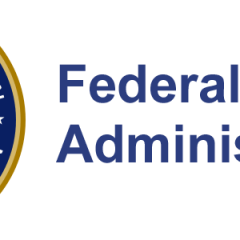FAA leaks Proposed Regulatory Evaluation regarding Unmanned Aircraft
UPDATE: The FAA just posted a press release featuring the following articles expanding on the leaked document we mention below: The following link shows the summary version of the “Notice to Proposed Rulemaking”. The DOT & FAA Notice of proposed rulemaking (NPRM) in all of its 195 page glory can be viewed here. Additionally an Unmanned Aircraft Systems Fact Sheet is viewable here. Good news for quadcopter and other multi-rotor pilots. The FAA accidentally posted a pdf which details their “Notice of Proposed Rulemaking Regulatory Evaluation”. Steve Zeets is the lucky person who happened to be on the FAA website at the instant it was available online and happened to open the pdf as it was being pulled off the website. Luckily for all of us he saved a copy before losing the only “copy” available. The document was in draft form in February, so who knows what has changed since then, nevertheless it’s an interesting look into the FAA’s view Unmanned Aircraft Regulation which will affect all quadcopters, and other multirotors. All i can say i’m surely not the only one happily surprised by whats outlined in the 89 page document. Especially since currently for commercial use you need to be a holder of a PP-ASEL (Private Pilot-Airplane Single Engine Land) License. I had always thought that knowing the different classes of airspace and other rules of the air was probably a good thing for quadcopter pilots to know, but requiring them to know how to land a Cessna 152 or 172 didn’t quite make sense. Read on down for interesting quotes from the document, as well as a link to view it yourself. To not miss important updates such as these be sure to join our newsletter. Gregory S. McNeal wrote a great article on Forbes detailing some of the points featured in the document: The FAA believes that quads and other multirotors will provide a large benefit They won’t require a commercial pilots license Instead of grouping and regulating drones in different size, weight, operational characteristics was too much of a burden They considered inspection, maintenance and permitting requirements Regulation will most likely limit to Line-of-Sight flying. No FPV Flights look to be allowed between sunrise and sunset The 400 foot (122m) ceiling appears to be getting a bump to 500ft (152m) Finally the FAA believes the enforcement costs will be reduced by providing simplified standards Other Interesting info from the FAA Eval: Between 2004 and 2012, there were 95 fatalities involving climbers working on cell and other towers. and here are two instances where Unmanned Aerial Systems could have greatly reduced risk: NTSB Accident Investigation Number: WPR09LA160: 3/20/2009 The helicopter pilot...




